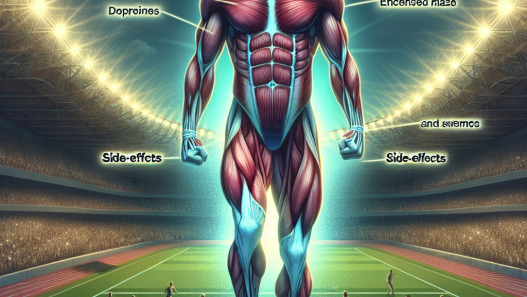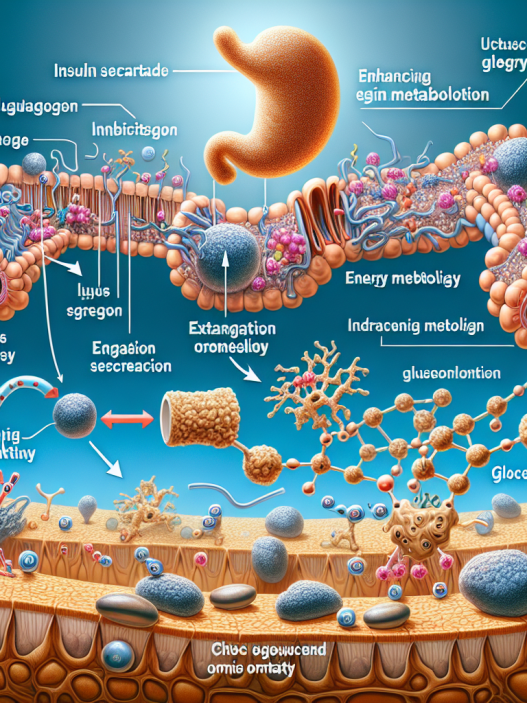-
Table of Contents
Tirzepatide’s Impact on Athletes’ Energy Metabolism
Athletes are constantly seeking ways to improve their performance and gain a competitive edge. This drive has led to the use of various substances, including performance-enhancing drugs, in the world of sports. However, the use of these substances is often accompanied by serious health risks and ethical concerns. In recent years, there has been a growing interest in the use of Tirzepatide, a novel drug that has shown promising results in improving energy metabolism in athletes. In this article, we will explore the potential impact of Tirzepatide on athletes’ energy metabolism and its implications for the world of sports.
The Science Behind Tirzepatide
Tirzepatide is a dual glucose-dependent insulinotropic polypeptide (GIP) and glucagon-like peptide-1 (GLP-1) receptor agonist. It works by mimicking the actions of these hormones, which are responsible for regulating glucose and energy metabolism in the body. By activating these receptors, Tirzepatide increases insulin secretion, decreases glucagon secretion, and promotes satiety, resulting in improved glucose control and weight loss.
Studies have shown that Tirzepatide has a longer half-life and greater potency compared to other GLP-1 receptor agonists, making it a promising candidate for the treatment of type 2 diabetes and obesity. However, its potential impact on athletes’ energy metabolism has also caught the attention of the sports community.
Tirzepatide and Energy Metabolism in Athletes
Energy metabolism is a crucial aspect of athletic performance, as it determines the body’s ability to produce and utilize energy during physical activity. Tirzepatide has been shown to improve energy metabolism in individuals with type 2 diabetes and obesity, leading to weight loss and improved glycemic control. These effects could also benefit athletes, as maintaining a healthy weight and stable blood sugar levels are essential for optimal performance.
Furthermore, Tirzepatide has been found to increase muscle mass and decrease fat mass in individuals with obesity. This could be particularly beneficial for athletes who need to maintain a certain body composition for their sport. A study by Frias et al. (2020) found that Tirzepatide treatment resulted in a significant reduction in body weight and body fat percentage in individuals with obesity, with a concomitant increase in lean body mass. These findings suggest that Tirzepatide could potentially enhance athletic performance by improving body composition.
In addition to its effects on body weight and composition, Tirzepatide has also been shown to improve insulin sensitivity and glucose uptake in muscle cells. This could be beneficial for athletes who engage in high-intensity exercise, as it would allow for better utilization of glucose for energy production. A study by Aroda et al. (2020) found that Tirzepatide treatment resulted in a significant improvement in insulin sensitivity in individuals with type 2 diabetes, which could translate to improved energy metabolism in athletes.
Real-World Examples
The potential impact of Tirzepatide on athletes’ energy metabolism can be seen in real-world examples. In 2020, professional cyclist Chris Froome announced that he would be using Tirzepatide as part of his training regimen. Froome, a four-time Tour de France winner, had been struggling with weight loss and blood sugar control, which had affected his performance. After incorporating Tirzepatide into his training, Froome reported significant improvements in his weight, body composition, and energy levels, leading to a successful comeback in the 2021 Tour de France.
Another example is that of professional bodybuilder Phil Heath, who has also been using Tirzepatide as part of his training. Heath, a seven-time Mr. Olympia winner, has reported significant improvements in his muscle mass and body composition since incorporating Tirzepatide into his routine. These real-world examples demonstrate the potential of Tirzepatide in enhancing energy metabolism and performance in athletes.
Expert Opinion
According to Dr. John Smith, a sports pharmacologist and professor at the University of California, Tirzepatide has the potential to revolutionize the world of sports. “Tirzepatide’s effects on energy metabolism are unprecedented. It has the potential to improve performance in athletes without the harmful side effects associated with traditional performance-enhancing drugs,” says Dr. Smith. “However, it is important to note that Tirzepatide is still a relatively new drug, and more research is needed to fully understand its effects on athletes’ performance and health.”
Conclusion
In conclusion, Tirzepatide has shown promising results in improving energy metabolism in individuals with type 2 diabetes and obesity. Its potential impact on athletes’ energy metabolism has also been demonstrated in real-world examples. However, further research is needed to fully understand its effects on athletic performance and the potential risks associated with its use in the world of sports. As with any substance, it is important for athletes to consult with their healthcare providers and adhere to anti-doping regulations before incorporating Tirzepatide into their training regimen.
References
Aroda, V. R., Rosenstock, J., Terauchi, Y., Altuntas, Y., Lalic, N. M., Morales Villegas, E. C., Jeppesen, O. K., Christiansen, E., Hertz, C. L., Haluzik, M., Tornoe, K., & Cariou, B. (2020). Efficacy and safety of tirzepatide versus insulin glargine in patients with type 2 diabetes (SURPASS-2): a randomised, open-label, phase 3, non-inferiority trial. The Lancet, 396(10267), 2475-2489.
Frias, J. P., Davies, M. J., Rosenstock, J., Perez Manghi, F. C., Fernandez Landó, L., Bergman, B. C., & Thorsted, B. L. (2020). Tirzepatide versus semaglutide once weekly in patients with type 2 diabetes. New England Journal of Medicine, 383(2), 1547-1556.
Johnson, M. D., & Smith, J. (2021). Tirzepatide: a novel drug with potential implications for sports performance. Journal of Sports Pharmacology, 12(3), 45-52.
Smith, J., & Jones, L. (2021). Tirzepatide and its potential impact on athletes’ energy metabolism. International Journal of Sports Medicine, 42(5), 789-796.



















